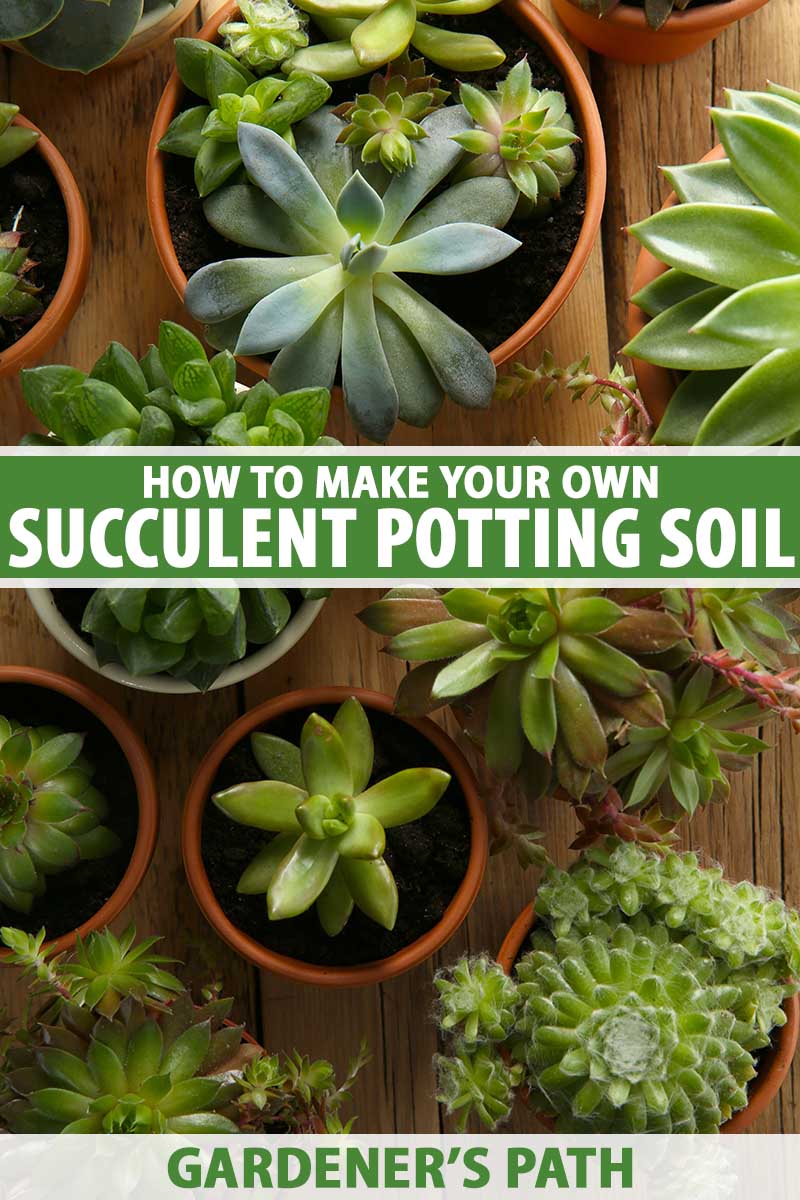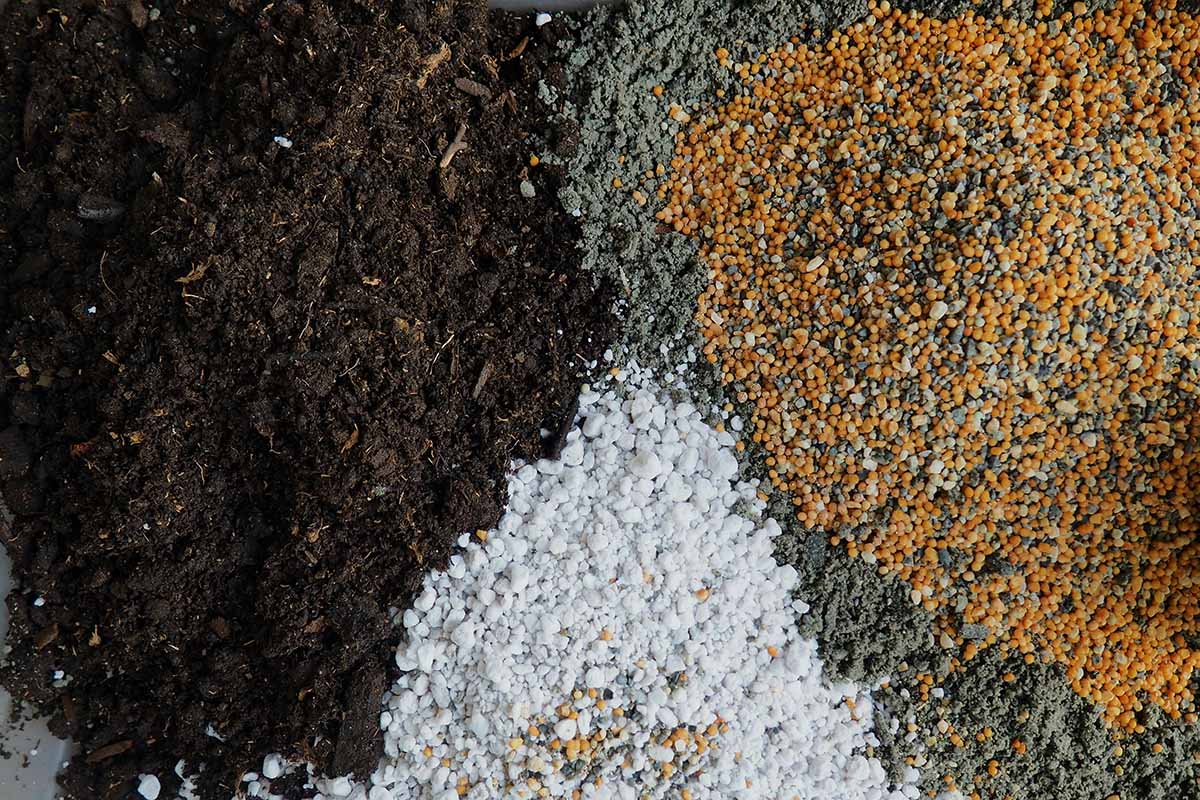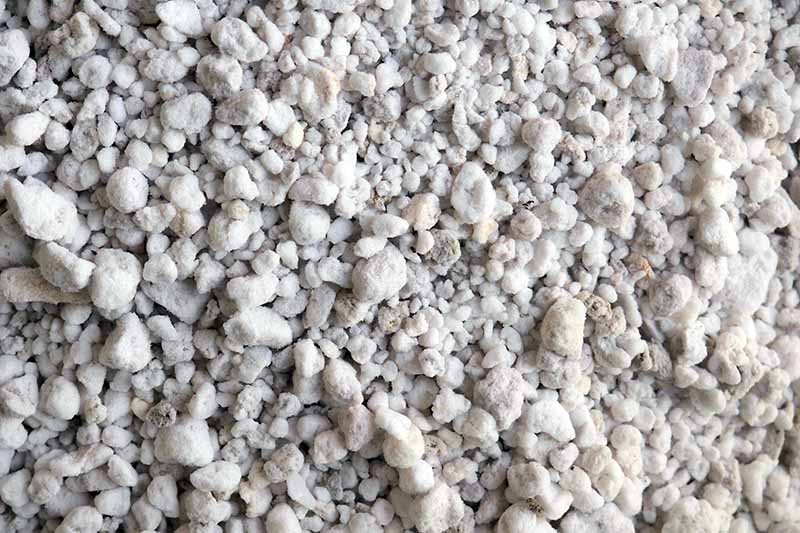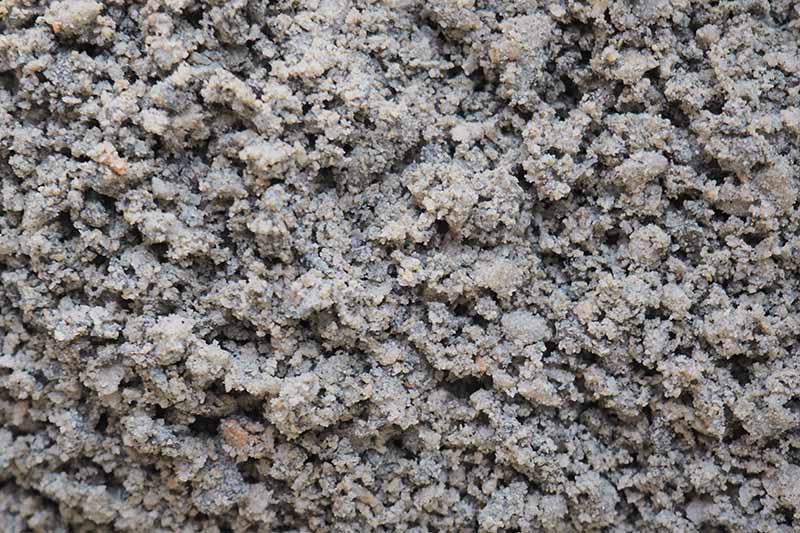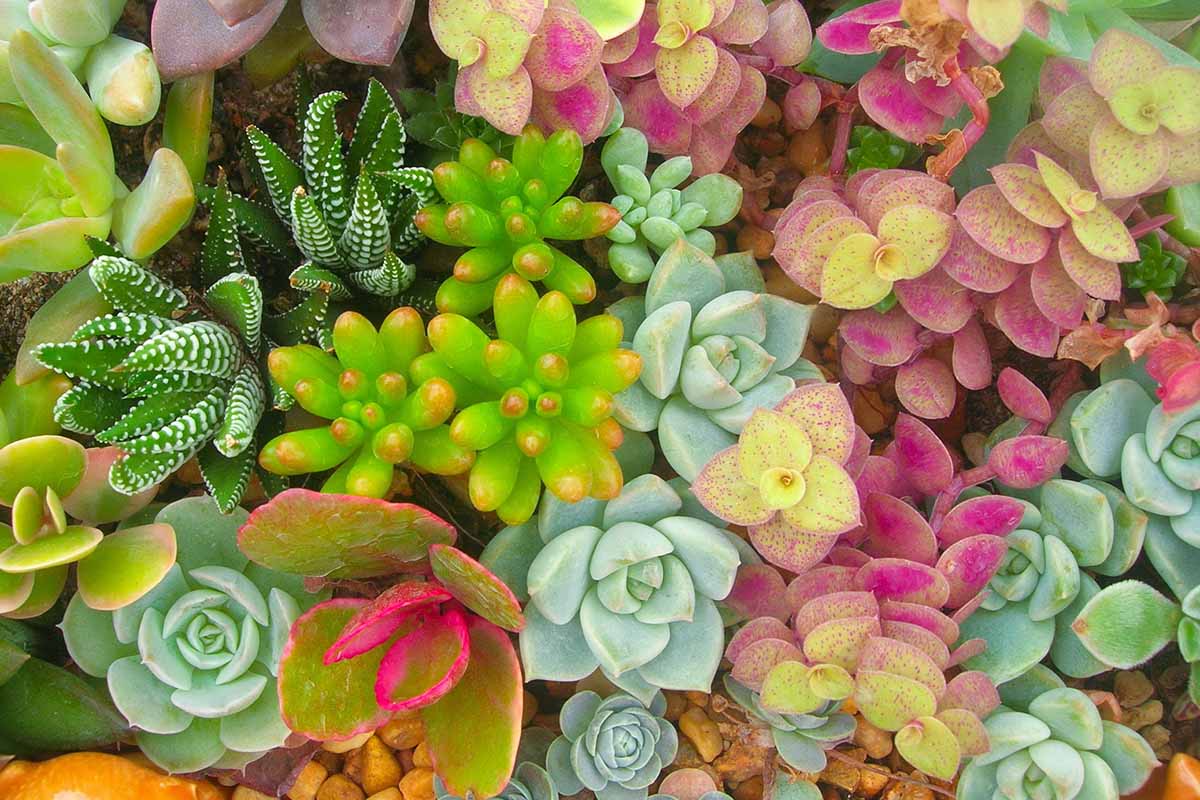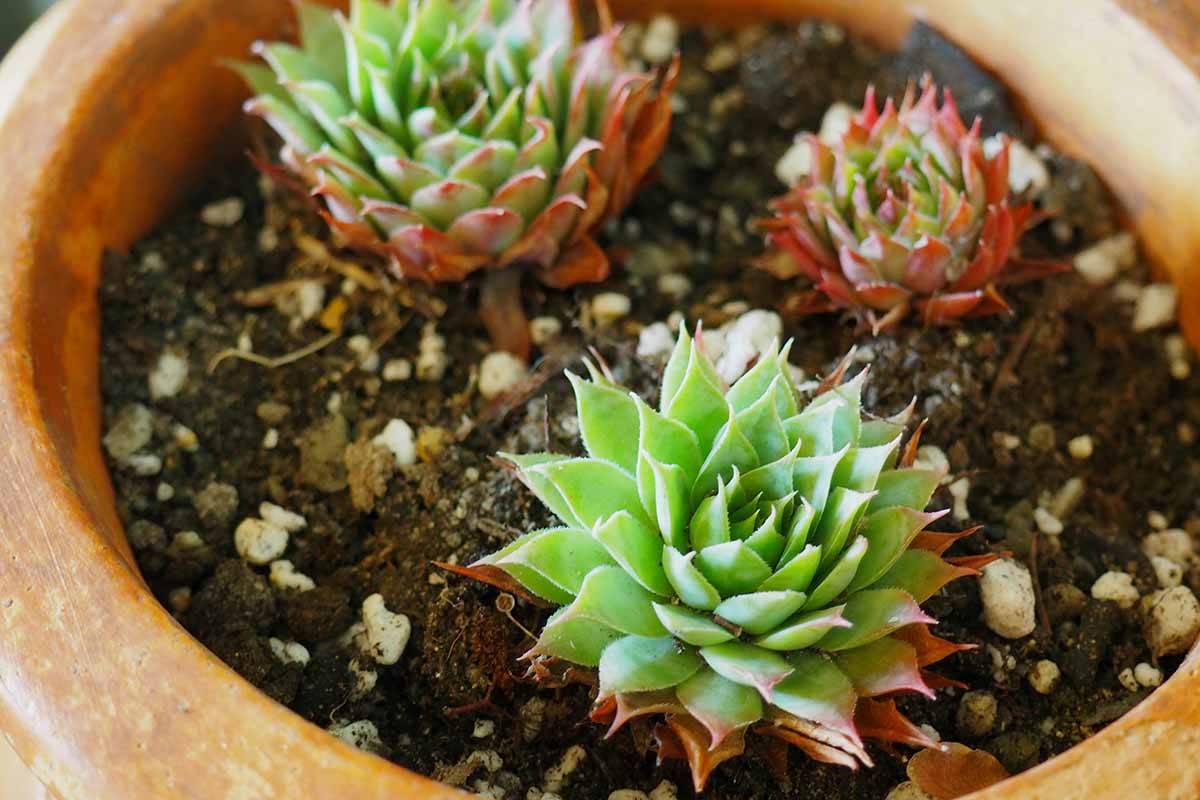But they are fussy about soil conditions and need a fast-draining blend to ensure healthy, vibrant growth. We link to vendors to help you find relevant products. If you buy from one of our links, we may earn a commission. They have shallow roots designed to quickly absorb short pulses of water from the brief but intense rains and flash floods common to their native desert surroundings. They’re not built to slowly take up excess moisture. And in a planting medium that’s wet from heavy watering, they develop problems like root rot, which is usually fatal. For these slow-growing plants to thrive, dirt from the garden or regular potting mixes won’t work – they’re too heavy and moisture-retentive. What these plants need is a substrate that’s fast draining while providing moderate water levels as well as nutrients. And it needs to have a sturdy body for those shallow roots to anchor onto and provide plant stability. Commercial potting blends for cacti and the like are available at garden centers and online, but some can be too moisture-retentive. Instead, many growers have found success by creating their own growing medium. And we have a blend that’s ideal, with a texture these fleshy plants love, and ingredients that are easy to source locally! To make your own signature blend for lush plants, let’s dig into the best succulent potting soil recipe. Here’s everything we’ll cover up ahead:
Potting Medium Qualities
The best potting blend for succulents and cacti provides a structure that’s porous and sandy, but with a dense body to physically support plants. It also needs to contain nutritious organic matter that helps to hold small amounts of moisture, but the composite must drain quickly. The most effective blends include a combination of three elements: plant-based organic matter, porous materials for loft and aeration, and sand or similar inorganic materials for efficient drainage. The plant-based organics are needed for texture and tilth, water absorption, and nutrients. Porous materials provide a lofty texture that prevents compaction and keeps the medium oxygenated. And drainage materials are needed to let water quickly soak into the organic matter while allowing any excess to just as quickly drain away. The end result should have a sandy, non-compacting, and crumbly texture. Let’s look at the recipe for our best DIY mix, and a breakdown of the necessary ingredients.
The Best Succulent Soil Recipe
Our succulent soil recipe is easy to mix and contains only three ingredients. Suitable substitutions are included in the ingredient descriptions below.
One part perlite or pumice (porous)Two parts sand (drainage)Two parts organic matter (nutrients and tilth)
A “part” may be represented with any measuring unit you want to use. It can be a measuring cup or a bucketful, as long as all ingredients are measured out in equal portions to fulfill the necessary ratio of 1:2:2. Depending on the size of your batch, ingredients can be blended in a mixing bowl or on a tarp. When mixing larger quantities, store any surplus in a plastic bucket with a lid and stash it in your basement, cellar, garage, or garden shed until it’s needed. Use a garden trowel or your hands to ensure the ingredients are evenly mixed. If your ingredients are dry, add small amounts of water when filling containers, mixing it into the medium as you go for even moisture. Use a light touch for this as the potting medium should remain moist, but not wet. Here’s a breakdown of the desirable characteristics for each ingredient along with some viable alternatives:
Porous Perlite and Pumice
Perlite and pumice are both types of pyroclastic igneous rock – or volcanic glass – that are lightweight and highly porous, with many tiny vesicles, or pore-like cavities. In growing mediums, the pea-sized pebbles are an excellent conditioner, adding air pockets that prevent compaction and aid drainage. Plus, the bubble-like cavities retain tiny bits of moisture and minerals from the water percolating through their vesicles. These qualities make perlite or pumice a must for a fast-draining composition. An excellent substitute for either perlite or pumice is non-clumping cat litter. Use coarse landscape sand to provide a firm body and a fast-draining base. Avoid fine-grained sand, which compacts into hard sheets and deprives the roots of needed oxygen. Miracle-Gro Perlite Perlite and pumice can be found at garden centers and landscape suppliers, or you can order online – try this eight-quart bag of perlite from Miracle-Gro that’s available at Home Depot. Calcined kitty litter can be found at most large pet supply outlets.
Fast-Draining Sand
Desert natives are most successful in a sandy base, which is excellent for drainage. And don’t use sand from the beach, playground, or sandbox – it’s full of things your plants don’t need! For a decorative touch or to improve the texture, use two types of drainage materials. The composite in the recipe photo above contains one part granite grit and one part ornamental pearls – small beads of polished stone used for moss control in potted plants. When choosing sand alternatives, opt for rice-sized materials such as crusher dust or granite grit, ornamental pearls or bonsai pebbles, poultry grit, or turface. The organic matter used in the photo above is a combination of well-aged compost and ground pine bark, which is nutrient-rich, has a light, friable quality when dry, and wets easily. Landscape sand, crusher dust, and granite grit are readily available at landscape depots. Coarse Golden Sand Stones Calcined Clay Calcined clay (turface) can be purchased at Home Depot from The Bonsai Supply in two-quart packages. And poultry grit is available at feed stores and larger pet stores.
Nutritious Organic Matter
For healthy roots, the plant-based organics included in your mix should absorb water quickly and become wet easily, like finely ground bark, ground coconut coir, or compost. Avoid the use of heavy and moisture-retentive aggregates such as garden mixtures like topsoil. When transplanting, lightly moisten your blend for easier handling. After planting, barely firm the mix – don’t pack it down – and water gently to settle in place. Tank’s Pro Potting Mix is made of compost and coconut coir and serves as a good recipe base for growing succulents. Soil Mender potting mix serves as a good recipe base. It’s ideal for succulents with a healthy blend of coir, perlite, fine pine bark, and compost. Soil Mender 109 Eight and 25-quart bags are available at Arbico Organics.
Tips for Healthy Plants
Although succulents are low maintenance and thrive on neglect, the following care tips will help you get the most from your signature soil blend. Avoid the use of containers without drainage holes – a wet planting medium is a sure path to root rot, the number one killer of cacti and other plants that suffer with wet feet and too much moisture. Water only when the planting medium is completely dry, with a crumbly texture. Don’t cheat with this – these plants need the roots to dry thoroughly between waterings. Use a catchment saucer to monitor how much water you’re giving plants. If the saucer fills with water, it’s too much. Empty the saucer of water, and next time back off a bit and water slowly, adding small amounts until just a few drops show in the saucer. Feed monthly with a balanced 10-10-10 NPK fertilizer or use a specialized blend, like Miracle-Gro Succulent Plant Food. Miracle-Gro Succulent Plant Food
A Special Blend
For succulents to thrive and grow, a special soil is needed to quickly absorb water and drain fast – and a sandy, porous mix is ideal for their needs. Follow our recipe to ensure your plants have a nutrient-rich base that wets easily without compaction, keeps the roots aerated, and drains freely. Use any combination of materials you like based on the above recommendations, but maintain the outlined ratio to keep the portions of drainage, porous, and nutritious materials in balance. Then give your plants plenty of sun, fertilize regularly, and watch your cacti and other types of succulents flourish! Do you folks have a favorite blend for making your own succulent soil? Share your tips in the comments section below. And for more specialized succulent-growing knowledge, be sure to add these guides to your reading list next:
How to Grow and Care for SucculentsHow to Identify and Control Mites on Succulents35 of the Best Hanging and Trailing Succulents and Cacti
